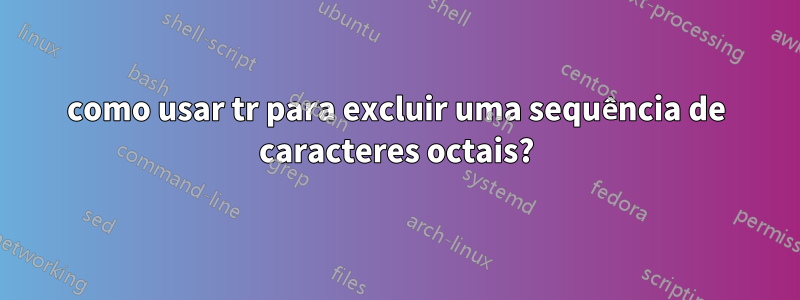
Estou tentando deletar isto: --More--de um arquivo .dat, este é um fragmento do arquivo para dar um exemplo:
Device ID: N7K-LAN(JAF1651ANDL)
IP address: 148.228.4.192
Interface: GigabitEthernet0/1, Port ID (outgoing port): Ethernet7/19
Device ID: CIRC_INF_IDF1
IP address: 148.228.107.252
Interface: FastEthernet0/20, Port ID (outgoing port): GigabitEthernet0/1
IP address: 148.228.107.252
Device ID: CIRC_INF_IDF3
IP address: 148.228.107.250
--More-- Interface: FastEthernet0/23, Port ID (outgoing port): GigabitEthernet0/1
IP address: 148.228.107.250
Device ID: CIRC_INF_IDF2
IP address: 148.228.107.251
Interface: FastEthernet0/22, Port ID (outgoing port): GigabitEthernet0/1
IP address: 148.228.107.251
Device ID: SEP1CAA0711CFBE
--More-- IP address: 148.228.199.103
Interface: FastEthernet0/2, Port ID (outgoing port): Port 1
Device ID: SEP1CAA0711CD67
IP address: 148.228.199.154
Interface: FastEthernet0/5, Port ID (outgoing port): Port 1
Usando um editor de texto hexadecimal, identifiquei os caracteres não visíveis

Agora estou tentando deletar toda a sequência de caracteres mas não consegui,
essas são minhas tentativas:
tr -d --More-- < tabladetallada.dat >temporaltabla.dat
tr -d '\015' '\012' '\20' '\055' '\055' '\115' < tabladetallada.dat >temporaltabla.dat
sed 's/--More--␣//' tabladetallada.dat>tabladetallada2.dat
tr -d ' --More-- ^H^H^H^H^H^H^H^H^H ^H^H^H^H^H^H^H^H^H' < tabladetallada.dat >temporaltabla.dat
Qualquer ajuda?
Obrigado.
é assim que parece no vi:
Device ID: N7K-LAN(JAF1651ANDL)^M
IP address: 148.228.4.192^M
Interface: GigabitEthernet0/1, Port ID (outgoing port): Ethernet7/19^M
Device ID: CIRC_INF_IDF1^M
IP address: 148.228.107.252^M
Interface: FastEthernet0/20, Port ID (outgoing port): GigabitEthernet0/1^M
IP address: 148.228.107.252^M
Device ID: CIRC_INF_IDF3^M
IP address: 148.228.107.250^M
--More-- ^H^H^H^H^H^H^H^H^H ^H^H^H^H^H^H^H^H^HInterface: FastEthernet0/23, Port ID (outgoing port): GigabitEthernet0/1^M
IP address: 148.228.107.250^M
Device ID: CIRC_INF_IDF2^M
IP address: 148.228.107.251^M
Interface: FastEthernet0/22, Port ID (outgoing port): GigabitEthernet0/1^M
IP address: 148.228.107.251^M
Device ID: SEP1CAA0711CFBE^M
--More-- ^H^H^H^H^H^H^H^H^H ^H^H^H^H^H^H^H^H^H IP address: 148.228.199.103^M
Interface: FastEthernet0/2, Port ID (outgoing port): Port 1^M
Device ID: SEP1CAA0711CD67^M
IP address: 148.228.199.154^M
Interface: FastEthernet0/5, Port ID (outgoing port): Port 1^M
Device ID: SEP1CAA0711D11A^M
IP address: 148.228.199.4^M
Interface: FastEthernet0/10, Port ID (outgoing port): Port 1^M
Device ID: SEPece1a985bb74^M
IP address: 148.228.199.21^M
Interface: FastEthernet0/12, Port ID (outgoing port): Port 1^M
Device ID: SEPf84f5794c5c4^M
IP address: 148.228.199.23^M
Interface: FastEthernet0/11, Port ID (outgoing port): Port 1^M
Device ID: SEP1CAA0711D276^M
IP address: 148.228.199.102^M
--More-- ^H^H^H^H^H^H^H^H^H ^H^H^H^H^H^H^H^H^HInterface: FastEthernet0/9, Port ID (outgoing port): Port 1^M
Device ID: SEPece1a985b5d5^M
IP address: 148.228.199.24^M
Interface: FastEthernet0/14, Port ID (outgoing port): Port 1^M
Device ID: SEP1CAA0711497C^M
Interface: FastEthernet0/4, Port ID (outgoing port): Port 1^M
Device ID: SEPf84f5794c8c2^M
IP address: 148.228.199.22^M
Interface: FastEthernet0/3, Port ID (outgoing port): Port 1^M
Device ID: Circulo_Camaras4^M
--More-- ^H^H^H^H^H^H^H^H^H ^H^H^H^H^H^H^H^H^H IP address: 148.228.101.5^M
Interface: FastEthernet0/24, Port ID (outgoing port): GigabitEthernet1/0/24^M
IP address: 148.228.101.5^M
Responder1
sed -e 's/^[ ]*--More--.*\x8//' -e 's/\xD$//'
- Em vez de escrever,
s/ */../minha preferência pessoal és/[ ]*/../porque fica*visivelmente anexado ao átomo à esquerda quando é um espaço/TAB. GNU sedtem o recurso de correspondência hexadecimal com o\xhexadecimalseqüência.
Responder2
A solução mais simples é pensar ao contrário. Em vez de tentar definir os caracteres que você não deseja, defina aqueles que você deseja e remova qualquer outro:
sed 's/--More--[^ a-zA-Z0-9]*//' file
Isso excluirá a string --More--e 0 ou mais caracteres depois dela que não sejam um espaço, uma letra ou um número. Dependendo dos seus dados, talvez seja necessário ajustar um pouco esse conjunto (por exemplo, também permitir _ou o que você precisar).
Agora, o primeiro --More--da sua pergunta parece conter caracteres de retrocesso (octal 010, Hex 7, ASCII \b), então você também pode fazer:
perl -pe 's/[\b]//g' file
Ou, para remover --More--também:
perl -pe 's/--More--[\b]+//g' file


